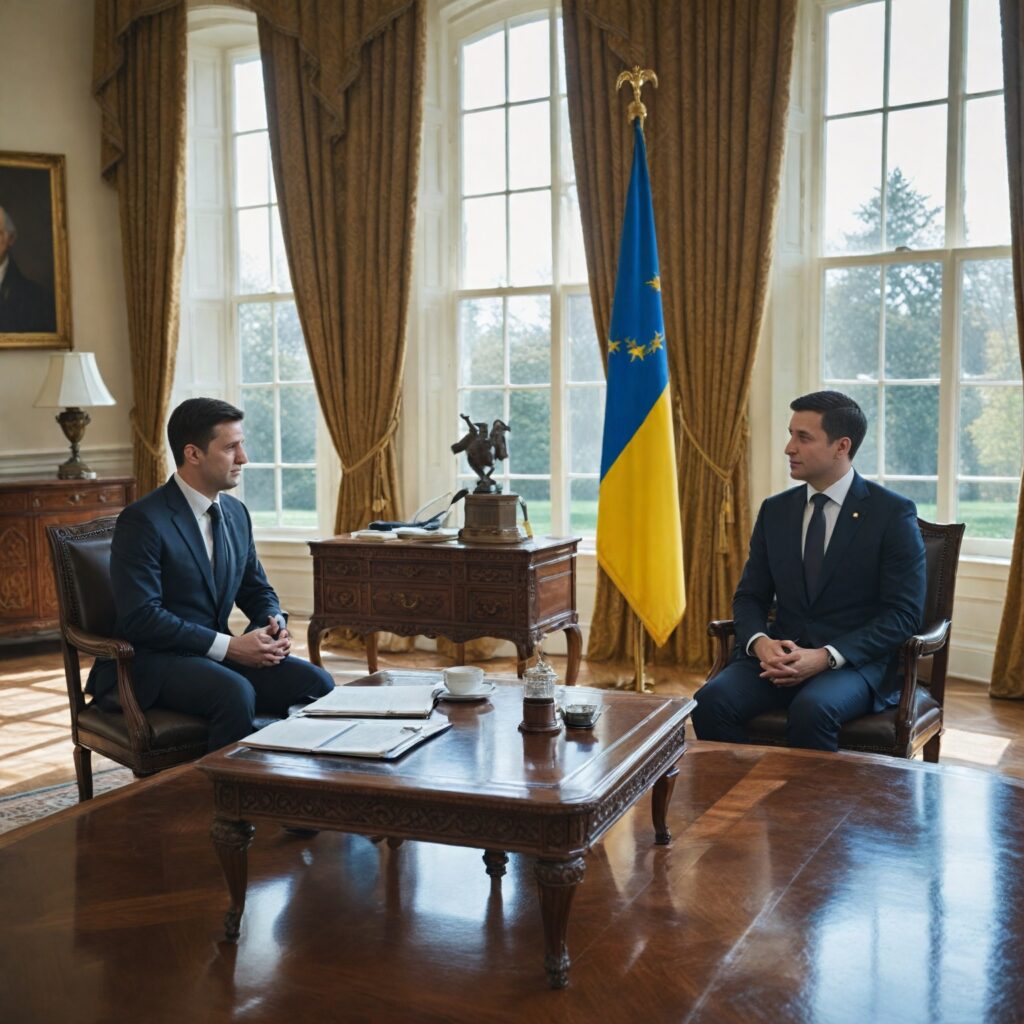
Highlights:
– Ukrainian President Volodymyr Zelensky expresses willingness to join a trilateral summit with Donald Trump and Vladimir Putin in Hungary.
– Tensions characterized a recent meeting between Trump and Zelensky, highlighting substantial disagreements over peace negotiations and military support.
– The geopolitical landscape remains complex, with Trump’s shifting stance on Ukraine and ongoing challenges regarding peace and territorial integrity.
Introduction to the Summit Proposal
Ukrainian President Volodymyr Zelensky has indicated his openness to join a summit alongside US President Donald Trump and Russian President Vladimir Putin, should he receive an invitation. This potential meeting is set against the backdrop of ongoing tensions stemming from Russia’s invasion of Ukraine, which began in February 2022. The summit is proposed to take place in Budapest, a location that has raised eyebrows due to Prime Minister Viktor Orban’s perceived pro-Russian sentiments. For Zelensky, this summit could provide a rare opportunity to engage directly with both leaders regarding the pressing issues that continue to affect Ukraine’s sovereignty.
The significance of this potential meeting extends beyond mere diplomacy; it reflects the complexities of international relations amid one of Europe’s most severe conflicts in recent memory. With Ukraine fighting to defend its territory and maintain the support of its allies, the dynamics between these key players could shape future peace negotiations and military strategies. Nevertheless, Zelensky remains cautious about the summit, emphasizing that the main objective is to achieve a just and lasting peace rather than a hasty resolution that might sacrifice Ukrainian interests.
Exploring the Tensions in Negotiations
Recent media reports have painted a grim picture of the dynamics during a bilateral meeting between Trump and Zelensky, suggesting that the atmosphere was fraught with tension and disagreement. Sources indicate that Trump recommended Ukraine accept certain Russian demands to avoid further destruction, echoing sentiments aligned with Kremlin rhetoric. Reports suggested Trump dismissed maps depicting the conflict zone and urged Zelensky to surrender significant territory, particularly in the contentious Donbas region. This stark confrontation highlighted the divergent positions of the two leaders, with Zelensky maintaining that peace cannot come at the cost of territorial integrity.
This conflict of priorities is emblematic of the broader geopolitical challenges facing Ukraine. While Trump, in his previous overtures, suggested that Ukraine could reclaim its territory, he simultaneously hinted at the necessity of some territorial concessions. These mixed messages create uncertainty for Zelensky, who is steadfast in his refusal to consider any peace that involves giving up land. As the situation evolves, the disparity in their approaches raises pressing questions about the feasibility of future negotiations and the extent to which the US will continue to support Ukraine amidst a shifting political landscape.
Implications and the Path Forward
The potential summit in Hungary could serve as a pivotal point for Ukraine’s future, revealing how leaders navigate the ongoing complexities of the conflict. Zelensky’s willingness to participate may indicate a strategic move to engage with both Trump and Putin, ultimately aiming for the kind of peace that respects Ukraine’s sovereignty. However, his criticism of Hungary as a neutral ground underscores concerns that the summit itself could lean favorably towards Russian interests, jeopardizing Ukrainian hopes for genuine support.
As the international community watches closely, the implications of these discussions could reverberate throughout Europe and beyond. Solutions to the ongoing conflict require delicate balance and strategic maneuvering, as the involvement of external powers like the US and Russia continues to shape the outcome. How will Ukraine maintain its position without compromising its territorial integrity? What role will the international community play in mediating these talks? As the situation develops, these questions remain integral to understanding the trajectory of Ukraine’s fight for peace and stability.
In conclusion, the proposal for a summit involving both US and Russian leaders represents a significant moment in Ukraine’s ongoing battle for sovereignty and peace. While Zelensky’s participation could open avenues for dialogue, the inherent risks and disagreements surrounding negotiations illustrate the precariousness of the situation. As this scenario unfolds, one must consider: What are the potential consequences for Ukraine if peace negotiations falter? How can global powers align their interests to support a balanced and fair resolution? The road ahead is fraught with challenges that demand careful navigation and concerted effort from all parties involved.
Editorial content by Emerson Grey












